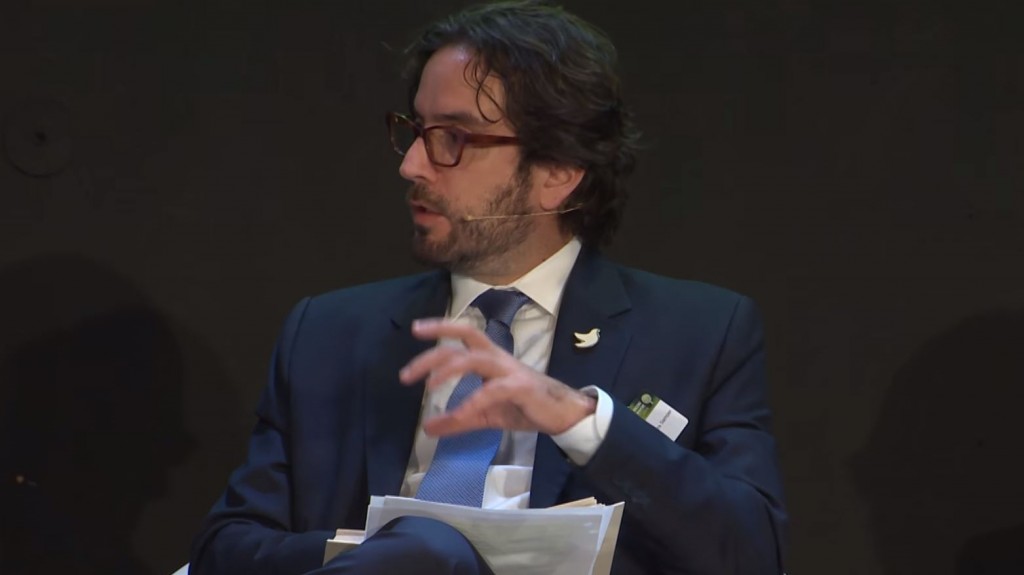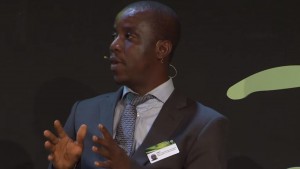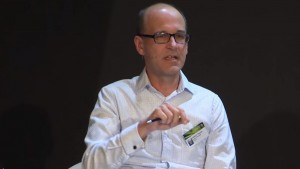How The Paris Climate Agreement Can Drive Colombia’s Fledgling Peace – And Keep Liberia’s Peace Alive
Liberia has built a lasting peace by implementing land reforms that stifled the forces of conflict and paved the way for carbon finance to support sustainable agriculture. Now Colombia hopes to mimic that success with a peace plan of its own – one that harnesses the forest-protection provisions of the Paris Climate Agreement to overhaul its agriculture sector.

This is the second of a two-part series. Click here for Part One.
28 July 2016 | For as long as Pablo Vieira Samper can remember, his native Colombia has been in a state of civil war – sometimes raging and sometimes simmering, but never completely abating. That may have changed last month, when the guerilla leadership of FARC (Revolutionary Armed Forces of Colombia) and the government of President Juan Manuel Santos outlined a roadmap to peace that Samper says will extend the current cease-fire into a true, lasting peace.
Why so optimistic? Largely, he says, because the new roadmap recognizes an aspect of the terrain that many peace agreements ignore: namely, the role of land disputes in driving conflict. It’s something Samper, as the country’s Vice Minister of Environment and Sustainable Development, has studied his entire adult life, and he can speak of it with both passion and academic precision.
“The concentration of conflict has been around those areas where you have the confluence and coincidence of social issues, poverty, and inequality in areas that are very rich in terms of biodiversity,” he said at last month’s Oslo REDD Exchange in Norway. “That results in the conflict, and the conflict is [often] socially-based or even environmentally-based.”
Biodiverse areas, he explained, provide cover for illegal mining and coca farming – activities that degrade the land and generate millions of dollars in income for criminal gangs while leaving nothing for farmers and forest people. At the same time, those activities fund the war itself, which has ultimately been fueled by inequitable land rights.
The peace process mandates land reforms designed to end those inequities, and Samper says the international community has created an improbable tool for implementing those reforms – namely, the Paris Climate Agreement.
Peace and the Paris Agreement
At first glance, the climate agreement doesn’t look like a tool for peacebuilding, but Samper says it is, and points to Article 5, which describes a set of initiatives dubbed “REDD+”, which stands for “reducing emissions from deforestation and degradation of forests, plus other land uses”.

REDD+ works in part by funneling carbon finance into forest governance and sustainable agriculture, which are two pillars of Colombia’s peace process. Indeed, says Samper, from the perspective of forest nations, the Paris Agreement is primarily a tool for peace and sustainable development, with environmental benefits coming as an added bonus, or “co-benefit”.
“As a co-benefit, at the end of the day, we will have those environmental and climate-change benefits,” he said. “REDD generates sustainable development in these areas, which allows for peace-building and the durability of the peace process, so it’s a virtuous cycle.”
And it’s a cycle that Liberia embarked on more than a decade ago – when REDD+ was little more than an experiment – in 2004. That’s when the country bolstered its own fledgling peace accord by shredding the forest-development concessions that warlord Charles Taylor had granted his cronies and then began implementing reforms designed to empower forest communities.
Those reforms are now drawing hundreds of millions of dollars in climate finance, according to recent figures from the Forest Trends REDDX carbon finance tracking initiative, and those funds are earmarked for activities that strengthen the land tenure of forest people and jump-start a more sustainable agricultural economy.
The Conflict-Land-Use Conundrum
In Part One of this series, environmental consultant Art Blundell identified one of the many tragic paradoxes of conflict resolution.
“The UN Environment Programme says that natural resources are a factor in about 40% of conflicts since the end of the Cold War, and they are often a driver,” he noted. “But if you look at peace agreements, only about 15% of them mention natural resources, let alone call for reforms of governance in a way that will minimize the role of resources in causing future.”
Although Liberia’s peace agreement also ignores the role of resources, the country had the foresight to implement reforms immediately after the agreement was implemented. Colombia is going a step further, making land-use reforms a pillar of its peace agreement, and both countries are looking to bolster their agreements with carbon finance.
Liberia, for example, has already received roughly $15 million in carbon finance to strengthen land rights and promote transparent forest governance, with nearly $35 million more “committed” – or on the way – according to the Forest Trends REDDX carbon finance tracking initiative. On top of that, at least three-times that amount is “pledged” – or on the table – and that’s just to pave the way for hundreds of millions more that could flow into sustainable agriculture as the Paris Climate Agreement takes effect.
Colombia, meanwhile, has already received more than $15 million to beef up its forestry governance, and at least twice as much has been committed, according to REDDX data.
This story has been adapted from the Bionic Planet episode “Climate, Conflict, and Commodities: The Calculus of Peace on a Changing Planet”, which is available on iTunes, TuneIn, Stitcher, and elsewhere.
Liberian Lessons
After shredding its tainted concessions, Liberia implemented the National Forestry Reform Law of 2006. That, in turn, laid the foundation for the Community Rights Law of 2009, which created a legal framework that defines and supports community rights in the management and use of forest resources.
In 2013, the Programme on Forests (PROFOR), a think-tank administered by the World Bank, invited stakeholders from across the country’s agriculture sector to a workshop in Monrovia and found near-universal support for the legislative reforms implemented until then, coupled with a corresponding consensus that the country still lacked the consensus to implement them – both inside the Forestry Development Authority (FDA) and among the different agencies responsible for forests, farms, mines, and other resources.
The concessions, in other words, were gone, and the legal landscape was improving, but the country still had a hodgepodge of agencies with different mandates converging on its agriculture sector. On the legislative front, participants said the country still lacked clarity on the structure of community governance, and there was still no law governing community rights on land that wasn’t forested.
“The lack of clarity about how that land should be governed allows members of the legislature to acquire hundreds of hectares of land without any responsible decision-making at the community level,” says Silas Siakor, who helped expose the role that timber money played in fanning the country’s civil war. “All [a corrupt legislator] has to do is get some ‘gifts’ or a bit of money to bribe a local chief, who signs off on the piece of paper – with no accountability whatsoever – and they can claim that land as their own.”
A current bill aims to fix that by formalizing customary governance and expanding existing reforms to the entire agriculture sector, but it’s been stalled in the legislature since 2014. Siakor hopes REDD+ can be a catalyst for moving that forward – but he isn’t holding his breath.
How Can REDD Help?
Liberia has used the funding it’s received so far to build the foundation of a national REDD+ program, including capacity building for government agencies as well as developing local pilot projects with communities, according to Brian Schaap, a senior program associate with Forest Trends.
The REDDX Liberia page shows $47,193,782 in REDD finance committed – meaning earmarked in a binding way – to the country, with $14,548,657 of that already distributed. An additional $150 million is shown as being pledged – meaning it’s on the table, but not yet committed – by Norway, and it will be formally committed and distributed when certain criteria are met.

“The grant agreement between Norway and the Liberian government ties the disbursement of funding to concrete achievements in land tenure and forest concession reform, community land rights, and national land-use policy,” says Schaap. “As such, Norway’s pledge explicitly addresses many of the key natural-resource-related factors necessary to maintain stable governance and promote continued peace.”
Specifically, he says, the grant provides $15 million in forest-related core budgetary support to the Liberian government, $55 million to begin implementing the national REDD+ strategy in selected communities – including the promotion of sustainable agricultural production – and up to $80 million in “payments for verified emission-reductions from avoided deforestation”, of which there could be billions more from other countries as the Paris Agreement is implemented.
REDD in Colombia
While Liberia’s foray into REDD+ comes a full decade after its peace process began, Colombia is developing its peace process with REDD+ in mind – something that would have been unthinkable even a few short years ago.
“Historically, conflict-ridden areas of the country have attracted relatively limited REDD+ finance, despite having some of the highest deforestation rates, but this is beginning to change within the context of the peace-building agenda,” says Jessica Breitfeller, an environmental consultant who contributed to the REDDX Colombia analysis. “As the prospect of peace ushers in the possibility of increased resettlement and economic development, the Colombian government – along with international donors – are recognizing the need to provide incentives to protect these areas and their remaining natural resources.”

The REDDX Colombia page shows $33,265,100 committed and $15,676,244 distributed, and Breitfeller says the World Bank’s BioCarbon Fund Initiative for Sustainable Forest Landscapes (ISFL) recently pledged and additional $65 million to carry out activities related to integrated land-use planning and sustainable agricultural development the Orinoquía region.
“Payments will occur in two separate phases, with $15 million expected to be disbursed during the technical assistance phase and up to $50 million in payments for verified emissions reductions during the secondary implementation stage,” she says.
Beware the Spoilers
Samper, Siakor, and Blundell all warned against weighing REDD+ down with unrealistic expectations – and of letting it get hijacked by people Blundell termed “spoilers” – those who have profited from war, or who will lose if the general population gains.
“We structured our land reforms with spoilers in mind, and we managed to avoid them,” says Siakor, “but we still have people who want to disrupt the process.”
He cites opposition to a pending land-use bill, which was first introduced in 2014 to formalize more democratic community governance and expand the current reforms beyond the forestry sector and into lands currently given to mining and other extractive activities.
“This would impose restrictions on what community leaders can and can’t do, and many don’t want those restrictions,” he says. “They want the status quo, so they’ve held up the process.”
A consortium of NGOs called the Civil Society Organizations (CSO) Working Group on Land Rights in Liberia warns that, if the bill doesn’t pass by the time the legislature adjourns on August 10, it will likely be on ice until 2018, and Siakor agrees.
“We have elections in October, 2017, so you won’t have real legislative deliberations until after that,” he says – adding that, unlike many in the CSO, he doesn’t see a resumption of armed conflict if the law remains stalled, but he does see an unnecessary political battle that could jeopardize environmental progress to-date.
“If the government tries to impose conservation without first clarifying these issues, it will be a public relations nightmare for the government and for the donors as well,” he says. “If they want to get the most out of REDD+, they’ll move that legislation forward.”
Please see our Reprint Guidelines for details on republishing our articles.


Money is an instrument. Through the whole article, either the Liberian and the Colombian examples consider money as the result. REDD+’s objective is to “reduce emissions from deforestation and forest degradation, and foster conservation, sustainable management of forests, and enhancement of forest carbon stocks”. It pledges to differ from any other conservation initiative by “paying for results”. In both countries just half of the money is considered for results; the rest for preparation. In the meantime that money is being spent (so far 100% in preparation). No result is mentioned (results must be numerically referred to indicators that represent the objectives; juridical and social results are within REDD+ just instruments). Who guarantees in case the expected results won’t materialize? How long should we wait for seeing the first result? REDD+ is being implemented since 8 years!…..Big promises on a “new approach” but business are going as usual: money diverted to planning, experts, bureaucracies, cronies, and producing smoke (from forests of course!).
Great to know that forest trends is exploring the links between forest-carbon storage and peacebuilding. I have also been trying to respond some related questions using Colombia as a model system.
I hope the paper I am enclosing can contribute to your work (Propensity of farmers to conserve forest within REDD+projects in areas affected by armed-conflict). Some additional views on the topic can be found in CIAT’s blog:
http://blog.ciat.cgiar.org/in_post-conflict_colombia_what_does_forest_conservation_depend_on/
If you are interested, I can keep you updated about the progress of my work on how to integrate forest carbon storage policies and development priorities (peacebuilding in the Colombian context). Forthcoming work include the following studies:
(1) Spatial associations between carbon in woody biomass and conflict-related variables indicate potential synergies between forest carbon-storage and peacebuilding (in review at environmental research letters).
(2) Land related grievances shape tropical forest-cover in areas affected by armed-conflict (in review)
(3) Forest Carbón Storage as Peacebuilding Strategy: Evidence from Colombia (in review)